PSYCH - PSYCHOLOGICAL CARE IN PHYSICAL THERAPY
1/56
There's no tags or description
Looks like no tags are added yet.
Name | Mastery | Learn | Test | Matching | Spaced |
|---|
No study sessions yet.
57 Terms
an understanding or attunement
Empathy
the ability to enter clients’ frames of reference and understand their situations and feelings from their point of view.
Empathy
the congruence, realness, or authenticity
Genuineness
therapists are aware of and honest about their feelings and attitudes.
Genuineness
unconditional positive regard, respect, liking, or prizing
Acceptance
therapists accept clients for who they are, regardless of any behaviors, attitudes, or feelings demonstrated by the clients.
Acceptance
T or F
By expressing empathy, the therapist may project his or her personal concerns onto the client, thus inhibiting the client’s expression of feelings.
False
should be sympathy
_____ often shifts the emphasis to the therapist’s feelings, hindering the therapist’s ability to view the client’s needs objectively.
Sympathy
T or F
Posture, proximity, touch, body movement, gestures, facial expressions, eye contact, tone of voice, use of time and space, and even physical characteristics are all under the attending skills
False
they’re under the non-verbal communication and attending behaviors
Open and closed questioning; empathetic listening
Attending skills
position and proximal space is under what type of non-verbal communication?
Proxemics
Proxemics is the study of distance zones between people during communication.
Give the 4 types of non-verbal communication under Kinesics
Facial expression
Touch
Posture
Gestures/Mannerisms
Particular vocal characteristics, such as tone of voice, speed of speaking, and volume
Paralanguage - Paralinguistics
The human face produces the most visible, complex, and sometimes confusing nonverbal messages.
Facial expression
T or F
Touch is a key skill in a physiotherapist’s role for both diagnostic assessment and treatment.
True
T or F
Posture is a barometer for feelings
True
_____ is useful in emphasizing ideas, in creating and holding others’ attention, and in relieving stress
Gestures/Mannerisms
Type of Proxemics
12-25 ft
Public space
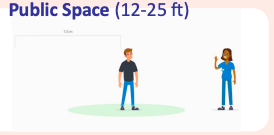
Type of Proxemics
0-18 in
Intimate space
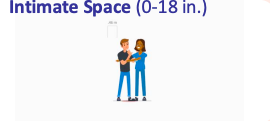
Type of Proxemics
18-36 in
Personal space
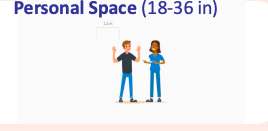
Type of Proxemics
4-12 ft
Social Space
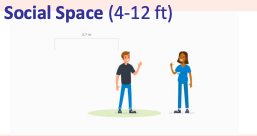
systematic study of the body and the use of its static and dynamic position as a means of communication
Kinesics
Congruency between the verbal and non-verbal expressed language.
Nonverbal cues appear in groups
Two key points to Successful Nonverbal Communication
False
Clustering
Reordering is the grouping of gestures, facial expressions, and postures into nonverbal statements
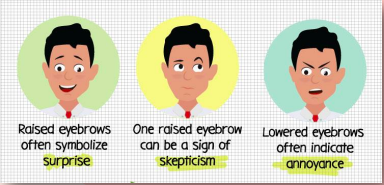
Facial Expression (just read)
T or F
limbs open and facing the patient shows closure and avoidance
False
limbs crossed over one’s chest - closure and avoidance
leaning back in a chair with the arms up and hands clasped behind the head shows openness to suggestions
True
slumped shoulders often signify _____
Depression
Awareness of ______ is useful when identifying a patient’s opinion and includes words and figures of speech.
Linguistics
Take note of ambivalence towards their self efficacy (e.g. “I don’t know if I can do…”)
Linguistic aspects such as timing, volume and tone, alongside nonverbal cues are useful to be aware of
False
Paralinguistic aspects
they will also indicate and give insight to the opinion and thoughts of the communicator
T or F
For communication to have any meaning, it must be understood by all parties to the communication
True
5 Cs of Communication
Complete
Clear
Concise
Cohesive
Courteous
act of paying attention to the therapist’s own thought processes and being aware of what the patient is saying in the background is under what zone?
Zone 2
therapist is theorizing and interpreting what is happening to the patient is under what zone?
Zone 3
act of listening to the patient and attending to linguistic, paralinguistic and nonverbal aspects is under what zone?
Zone 1
Ways of Empathetic Listening
a response to a client’s communication used to ensure that the practitioner has heard what the client said accurately.
Paraphrasing
Ways of Empathetic Listening
T or F
Summarization is used when physical therapists sense that there is a lot of emotion connected with a client’s injury or recovery process that is not being expressed verbally
False
Reflection of Feelings
Ways of Empathetic Listening
T or F
Summarization tries to capture the essence of a longer period of communication.
True
Therapeutic Communication Techniques (Read)

Therapeutic Communication Techniques (Read) p2
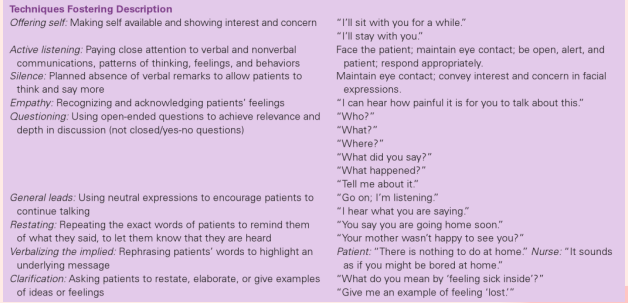
Therapeutic Communication Techniques (Read) p3

Therapeutic Communication Techniques (Read) p4

Therapeutic Communication Techniques (Read) p5

Therapeutic Communication Techniques (Read) p6
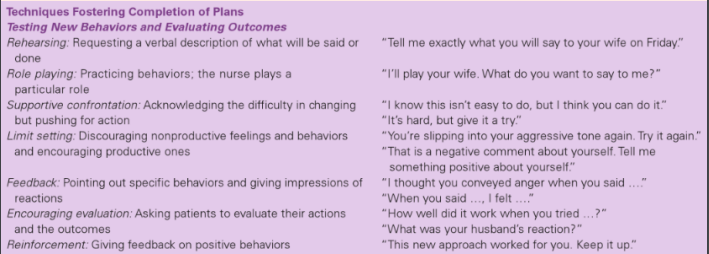
Ineffective/ Inappropriate Responses and Behaviors
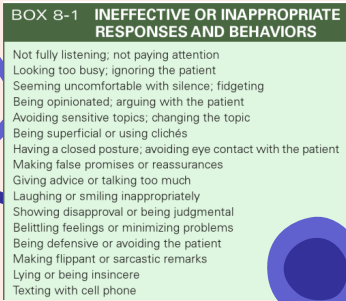
Fear of ______ and of being injured is a concern with the few patients who do not respond to staff efforts at verbal diffusion of anger.
Violent behavior
T or F
You should reinforce and argue with a patient’s delusions/ hallucinations
False
Do not reinforce; arguing with a patient about delusions/hallucinations is ineffective and inappropriate. Focus on the feelings
T or F
Therapist should understand the patient’s point of view as the patient sees it.
True
Conflicting Values - Encourage patient to examine the effects or outcomes of their beliefs on their lives, relationships and happiness.
T or F
Crying should not be allowed and encouraged, verbally and nonverbally if a patient is expressing vulnerable emotions
False
Unless it is a manipulative gesture or is prolonged and unproductive, that’s when you don’t tolerate it
Privacy should be provided.
When a patient exhibits _____ & lack of ____, listening, clarifying and verbalizing thoughts that have been implied are appropriate for identifying the underlying causes of a lack of cooperation
Denial & Lack of Cooperation
Measures to increase trust and a great deal of patience from the therapist are needed
Common ________ are a means to gain attention, sympathy, control and dependence.
Manipulation
PT Approach: Limit setting – setting appropriate boundaries
Patients with severe _______ and incoherent speech patterns who have disturbed thought process: patients who are upset, confused or psychotic
Severe anxiety & incoherent speech patterns
Approach: clarify the meaning of the communications
Severely _______ patients might be unable to be clearer
Ill/ anxious
PT approach: key into their feelings and underlying themes, rather than trying to make sense of the content of their speech.
T or F
Patients who expressed sadness, helplessness, hopelessness, lack of energy, or a negative attitude about everything present with Depressed Affect, Apathy or Psychomotor Retardation
True
PT approach: use patience, frequent contact and empathy; encourage gradual increase in activities
These patients should be in quiet area, with minimal auditory and visual stimulation. The therapist must remain calm, speak slowly and softly, and respect patients’ personal space.
Hyperactivity (Hyperactive patients)
This behavior might cause the patient to be afraid of everyone
Suspiciousness
Approach: communicate clearly, simply and congruently; clarify misinterpretations by patients, but avoid arguments over differences in opinion
T or F
Transference might occur in response to a patient’s transference.
False
Countertransference might occur in response to a patient’s transference.
______ involves the unconscious emotional reaction that patients have in a current situation that is based on previous relationships and experiences
Transference
Therapists must examine their strengths, weaknesses, prejudices and values before they can interact more appropriately with patients.
Physiotherapy is widely recognised as a ‘hands on profession’ and physiotherapists work in a manner in which they are in close physical proximity to patients
Sexual Innuendos or Inappropriate Touch
The physiotherapist may need to examine their communication with a patient.
Erotic transference & countertransference